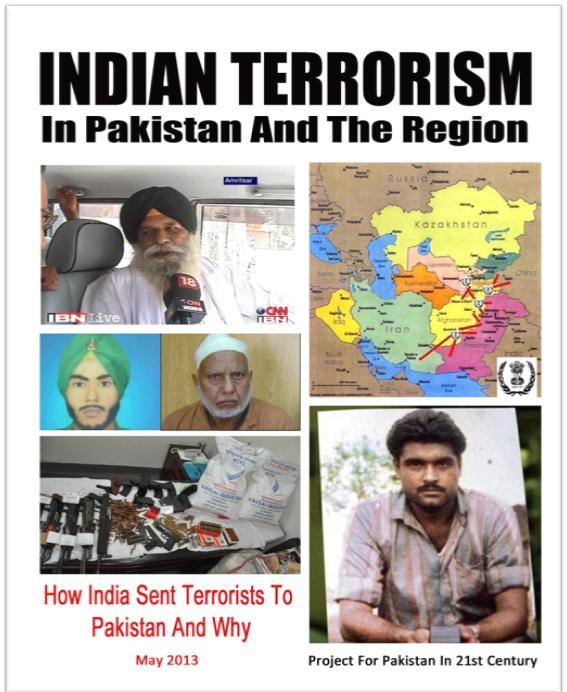
INDIAN TERRORISM IN PAKISTAN The Story Of Three Spies And One Saboteur
The death of Sarabjit Singh is a reminder of how India expanded its limited conflict with Pakistan over Kashmir into an all-out animosity.
BACKGROUNDER | 2 May 2013
Project For Pakistan In 21st Century
ProjectPakistan21.org
Executive Summary
This backgrounder offers a clear, concise and uncluttered argument on Indian terrorism against Pakistan since 1950. It is meticulous work that will help researchers in Pakistan, India and the world understand the genesis of Indian animosity toward a neighbor five times smaller that represents no threat to India.
The authors of this document encourage reading the entire dossier to better understand the Executive Summary shown below.
1. Pakistan faced a wave of Indian terrorism in the 1980s and 1990s. The arrest of two spies, Kashmir Singh and Surjeet Singh, and one terrorist-saboteur Sarabjit Singh, came in this period.
2. Way before 9/11 and al-Qaeda, India was the first source of State and Non-State terrorism in the region.
3. Pakistan’s dispute with India was limited to Kashmir at the UNSC. Bilateral relations were normal. But India expanded the conflict into other areas in 1950, 1971, 1974 and 2002.
4. In 1950, three years after Pakistan’s independence, India launched a proxy war against it from Afghanistan.
5. In 1969, India exploited low Pakistani deployment on East Pakistan border and began organizing and recruiting a terror militia. In 1971, sensing an opportunity, India launched an invasion across international borders, aided by the terror militia, to seize territory and declare it Bangladesh.
6. In 1974, India introduced nuclear weapons in the region. The move was unnecessarily and unprovoked, just like its invasion of Pakistan three years earlier.
7. Evidence and statements by Kashmir Singh and Surjeet Singh to the Indian media confirm that a third terrorist-saboteur Sarabjit Singh was a killer sent by India to eliminate Pakistani civilians in public places.
8. The cases of the three Indian agents prove how India sent terrorists to Pakistan from 1973 [Kashmir Singh] to 1990 [Sarabjit Singh].
9. Pakistani track record of treating Indian prisoners, including convicted Indian terrorists, is impeccable. In comparison, India returned a Pakistani PoW without a tongue. India ‘executed’ a Kashmiri and never returned his body to family.
10. Pakistan has pardoned two Indian spies and released several others without any bodily or mental harm. India never reciprocated.
11. Indian media and government officials clearly exploited the accidental death of convicted Indian terrorist Sarabjit Singh in a prison brawl to whip up anti-Pakistanism and war hysteria.
12. Instead of coming clean and mending fences, India lied to its public about the terrorist activities of its agents in Pakistan and misled the public opinion.
13. In 2002, India returned to Afghanistan to revive anti-Pakistan terror activities, coming full circle since 1950.
14. What drives Indian terror activities against Pakistan since 1950? One answer is: the Hindi-speaking northern Indian minority that rules India. More information is provided in this backgrounder on the so far hidden role of Hindi-speaking north Indians in India’s internal and external conflicts.
|